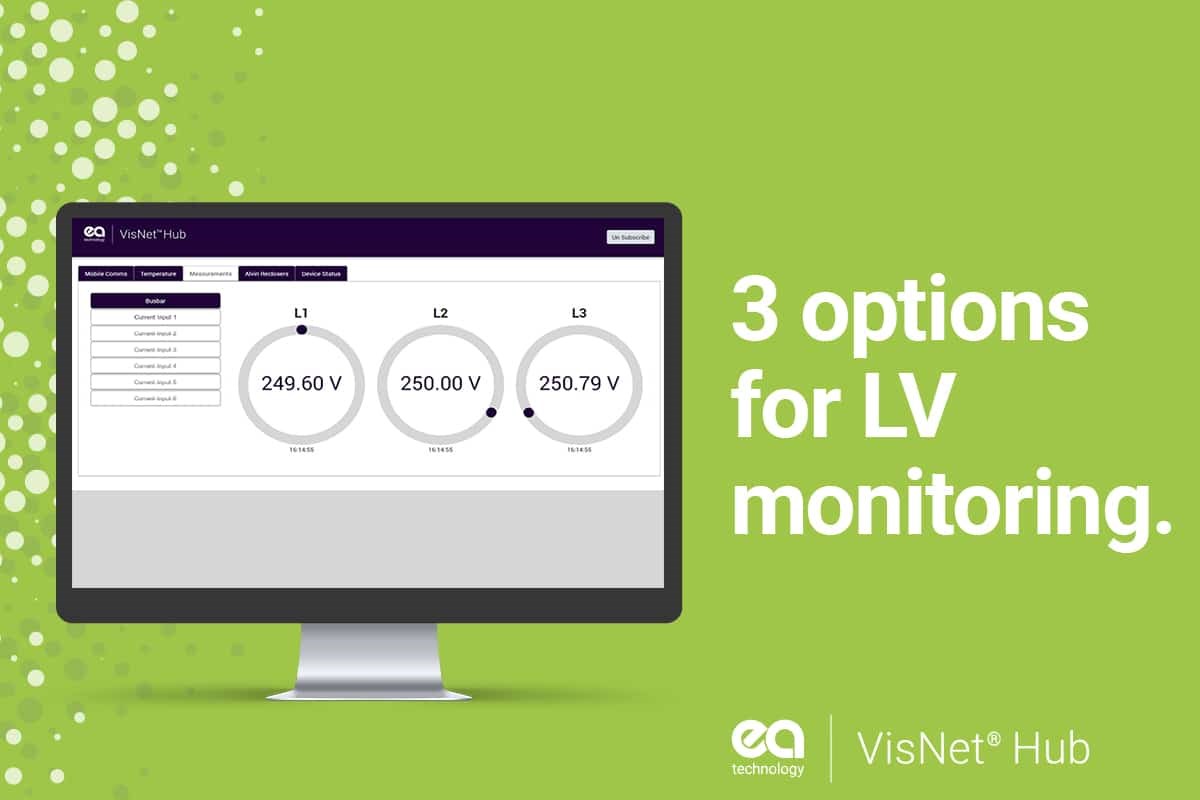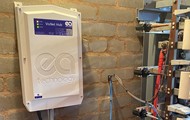Blog: 3 Options for LV Monitoring
-
09 March 2021

Countless specifications and strategies are being explored and adopted by electricity companies world wide based on the outcomes of trials and tests of low voltage (LV) network monitoring. It’s no small challenge: most electricity companies have significant numbers of secondary substations, and of these tens of thousands of substations, most have been installed in the last 40 years or more. With a mammoth task ahead, here are three options for LV monitoring…
1. Keep the status quo
Doing nothing is always an option, but this can only ever be a temporary measure, with the growing pressure on the network. Traditionally, the basic monitoring tools installed in secondary substations – maximum demand indicators, or MDIs – require manual monitoring, meaning that readings are only taken sporadically, usually once per year.
The information supplied by low-cost, low-accuracy MDIs is of limited usefulness, with no data on the timing, duration, or frequency of peak demand. This knowledge gap means that there is no useful info for either network operations or network planning.
Is there any untapped potential? This technical note on the ‘Distribution Substation Monitoring and Supply Voltage Optimisation Program’ report, accompanying the Evoenergy’s 2019-24 regulatory submission, indicates that there might be:
“At the monitoring level, basic Maximum Demand Indicators (MDIs) were installed to identify overload conditions of distribution substations that require upgrades or network reconfiguration. Additionally, distribution transformers were designed to supply a nominal voltage at the high end of LV voltage at around 250V. While this worked well for the load only scenario of the past, it does not support embedded generation.”
There’s a word of warning on relying on old technology, though. Using the sum of MDI measurements will, in all probability, overestimate the peak load on a feeder (or a section within it), so correction will be needed to achieve a more accurate estimate of true peak flow. Get the estimate wrong and this will have a knock-on effect on the picture created of network capacity headroom, and thus the planning of network operation and development. In short, there’s a lot of guesswork involved, which is self-defeating if you want to develop plans based on solid data, with the best chance of delivering.
2. Small-scale trials
Electricity companies have been busy trialling better LV monitoring for a number of years during the last decade. Understandingly, these trials were small scale, and there was initially a lack of off-the-shelf LV monitoring systems to contend with as electricity companies broke new ground.
In the UK, Western Power Distribution pointed out in the close-down report of its Next Generation Networks project in 2016, at the beginning of the project, trialling LV monitoring started by coming up with a bespoke solution which involved interrupting customer supply during set-up, which is a no-no for regulators. The challenges of integrating solutions at the hardware level led to spin-off activity around LV current sensor technology evaluation and further research to find a commercially available solution that could be installed without interruption of supply. Happily, a number of solutions could be found.
In the 2020s, with much of the investigative legwork having been completed by different electricity companies, the value and necessity of LV monitoring has been established. At this point, monitoring at small-scale should be seen as a means to an end, with the focus being on solutions and approaches that can be easily scaled up from field trials.
3. Scale-up for data-driven network management
It’s estimated that by 2050 “$16 billion in network infrastructure investment is avoided by management of distributed energy resources like solar and batteries”; and innovative new LV monitoring technology has a large part to play.
To achieve futureproof network monitoring that can provide local intelligence for local planning requires dynamic real-time monitoring in low-voltage distributions substations. Happily, this is now a reality thanks to the availability of standard and open software platforms such as VisNet® Hub, which can supply real-time transformer data to improve outage management, planning, operation and monitoring of infrastructure assets.
As you assess the options available to you, look for systems that involve straightforward retro-installation of sensors for LV monitoring, with the sweet spot being a system that can centralise the information generated and automate data analysis down to notifying you automatically about LV network issues.
Ideally, LV monitoring should not only tell you what you need to know about load, faults and condition information across the network, but give you an accurate snapshot of remote condition monitoring to combat rapid equipment decay and energy losses.
In summary, LV monitoring has to be given due recognition as a key contributor to credible decision making to maintain networks and optimise performance for all customers. The risks associated with getting your LV monitoring strategy wrong are high in a rapidly changing world with an uncertain future. Narrowing the odds is now much more straightforward, thanks to real-time monitoring insights.
Want to find out more about VisNet® Hub? Read our FAQs here and get a quick overview of the system here.
To find out more about LV Monitoring and VisNet Hub®, check out the pages below:


